GCP's sunset – Output categories

I Research
1. Genetic stocks
2. Genomic resources
3. Informative molecular markers
4. Cloned genes
5. Molecular breeding
II Integrated Breeding Platform (tools and services)
To be considered as a single block
6. Breeding information and communities of practice
7. Data management software
8. Analysis and decision-support software
9. Data management service
10. Breeding and support services
III Capacity building services and training materials
11. Capacity building
IV Community and knowledge sharing
12. GCP's scientific and social network
13. GCP's institutional Memory
GCP's sunset – Position Statement
July 2012
Assessing and positioning GCP’s activities and legacy in research-for-development
 The Generation Challenge Programme (GCP) was conceived as a time-bound initiative, to be implemented in two-phases over a 10-year period (2004–2013), with the mission of using genetic diversity and advanced crop science to improve crops for greater food security in the developing world.
The Generation Challenge Programme (GCP) was conceived as a time-bound initiative, to be implemented in two-phases over a 10-year period (2004–2013), with the mission of using genetic diversity and advanced crop science to improve crops for greater food security in the developing world.
Consistent with the vision of the GCP founders, the Programme will be brought to an orderly close at the end of December 2014. To ensure that GCP’s achievements are exploited to the maximum extent possible, and to fulfill commitments made to our many partners and stakeholders, as part of the closing process we propose to evaluate the Programme’s performance, identify key lessons learnt, and take steps to ensure that GCP’s products and services are well positioned in the prevailing research-for-development landscape to have not only large, but also sustainable impact.
Some of the activities that have been supported under GCP will quite clearly have achieved their objectives by end December 2014; those activities should be phased out, with appropriate provisions made to ensure that the associated products and services will remain accessible in the future to the global plant-breeding community. Other activities that have been supported by GCP will almost certainly not have achieved their final objectives by end December 2014; for those activities, there will be a need to consider a follow-on strategy, especially if their extension complements and adds value to other efforts, with the goal of identifying how they could be sustained in a post-GCP world.
In line with the spirit of the CGIAR reforms, activities that outlive GCP should, to the extent possible, be embedded within CGIAR Research Programmes or transferred to institutes or programmes outside the CGIAR. Given certain unique characteristics of the Programme, it may, however, be anticipated that some activities deemed important enough to merit continuing support may not fit comfortably into existing initiatives, or might be more efficiently executed through a central service rather than fragmenting across CRPs; should any such activities be identified – there will be a need to identify implementation mechanisms that will ensure their continuation and sustainability.
We embark upon the process of planning for the winding down of GCP in a spirit of openness and consultation. In the weeks and months ahead, we will exercise transparency and communicate frequently, with the goal of keeping the GCP community up to date and fully informed on the status of a transition that concerns us all.
GCP sunset - Videos
Videos
 News, views and perspectives on GCP's closure in 2014.
News, views and perspectives on GCP's closure in 2014.
|
A chat with our Board Chair on the life and times of GCP Andrew Bennett is the Chair of GCP's Executive Board. Here, he traces GCP's various transitions, from its beginnings to the present time. To go to a specific topic on the video:
Topics:
|
|
GCP's sunset – Timeline
Timeline |
 |
Key milestones in the transition into the CGIAR reform, and in the sunset and closure strategies.
 |
November 2012 |  |
Position Papers endorsed by the Consortium Committee. |
| October 2012 |  |
Position Papers endorsed by the Executive Board. | |
| September 2012 |  |
|
|
| July–August 2012 |  |
Position Papers (then termed 'white papers') drafted by GCP staff. | |
| June 2012 |  |
Taskforce constituted. | |
| March−May 2012 |  |
GCP's Consortium Committee and Executive Board endorse way forward and corresponding timeline, including formation of a Taskforce. Taskforce primarily to guide identifying the various research and service products over the Programme's 10-year lifespan, and mapping the possibilities for their post-GCP positioning to assure ccontinued availability, sustainability and impact. | |
| March 2012 | 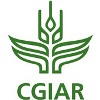 |
CGIAR attains international organisation status. |
|
| February 2011 |  |
CGIAR Consortium Board presents revised Strategy and Results Framework to funders. |
|
| 2010 |  |
CGIAR implements its Change Management Initiative:
|
|
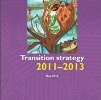 |
|
GCP's sunset – Position Papers
Position Papers
 GCP in collaboration with external experts has drafted a series of 11 Position Papers (accessible via links below).
GCP in collaboration with external experts has drafted a series of 11 Position Papers (accessible via links below).
Two of these 11 papers are 'big-picture' papers on: (a) Programme level overview; and, (b) a synthesis of all the research aspects combined.
The other nine component-specific papers drill down into each component, and cover four main areas:
- research (5 papers)
- services (1 paper)
- capacity building (1 paper), and
- communications and knowledge sharing (2 papers).
The goals are to communicate component-level outputs and deliverables during the Programme's lifetime (2004–2014), list products and outcomes, and explore options for enabling and ensuring that the potential benefits of these components will be fully realised in the future. At this stage, the Position Papers are essentially a very preliminary analysis primarily for internal use, but made publicly available in keeping with GCP's culture of transparency and sharing information. The papers are therefore likely to evolve over time, shaped by progress made during GCP’s remaining time, and by the evolution of international agricultural research for development, particularly in terms of the ‘moving landscape’ of socioeconomic, political and environmental issues in which CGIAR operates.
Each of the nine component-specific Position Papers is designed to contribute to GCP’s orderly closure in 2014 by considering the following three questions:
1. What assets will be completed by the end of GCP’s lifetime in December 2014?
2. What assets can best continue as integral components of the CRPs or elsewhere?
3. What assets may not fit within existing institutions or programmes and may require alternative implementation mechanisms?
The papers were drafted in July–August 2012, externally reviewed in September 2012, and endorsed by the Taskforce and GCP Executive Board in September–October 2012. They were endorsed by the Consortium Committee (CC) in November 2012 (to view CC members, click on 'Consortium Committee' tab on the Governance page).
Initially conceptualised as 'white papers' to clarify the issues at hand and to help with decision-making by the Taskforce, Consortium Committee and Executive Board, they subsequently advanced to 'Position Papers' in December 2012, once input from these groups as well as external reviewers was incorporated.
Programme overview | Research: synthesis – components | Services | Capacity building | Community and knowledge sharing

GCP is an innovative global partnership in modern crop breeding for food security that currently comprises a portfolio of more than 100 collaborative inter-institutional research projects. Initially proposed and approved in 2003, GCP started operations in 2004 and is scheduled to close in December 2014, as envisioned at its founding, and in conformity with the recent CGIAR reform. This paper provides an overview of the current status of GCP’s activities, outcomes and possible impact, service platforms delivery, and outlines proposed post-closure transfers of assets and requisite actions to secure a decade of significant research investments totalling about USD 180 million. This overview paper builds on individual Position Papers developed for each of the nine GCP components. |
|
| Back to top | |
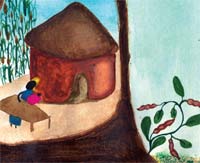
This paper summarises the key points from the five component papers below: 1. Genetic stocks |
|
|
Research component papers 
Activities geared towards genetic improvement generally aim at developing products such as new varieties better adapted to the needs of agriculture. GCP’s portfolio also includes upstream activities that produce other materials valuable to the whole improvement process. For the purposes of this paper, these are referred to as ‘genetic stocks’. This definition includes the notion of perpetuation (a ‘line’), which is central to genetic stocks. GCP’s genetic stocks component was born of the recognition that genetic gain in crop germplasm can be significantly increased by: (a) more efficiently exploiting various sources of diversity, and, (b) creating diversity to expand the base for trait discovery and selection. As a result, the development of new genetic stocks has been a cornerstone of the original foundation of GCP research and for its network of partners. Initially, these resources often had a more upstream aspect (eg, genetic studies), but the activity remained at the heart of GCP projects even when GCP shifted to focus more on integrated plant breeding and the use of these resources. |
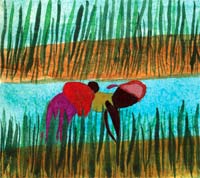
Accessing the genetic diversity found in genebank accessions or genetic stocks can be conducted efficiently through genetic studies that help identify new elite alleles for use in plant breeding. Molecular breeding, which combines genotypic and phenotypic information, has emerged as a powerful approach. It offers new perspectives for increasing the efficiency of breeding, reducing (among other things) the number of crop cycles required. Genetic studies and molecular breeding approaches both require basic genomic resources such as molecular markers, genetic maps and sequence information. These resources were not available for several GCP target crops when GCP started in 2004, especially for the less-studied crops. In Phase II, GCP is focusing on nine of the 18 original GCP crops. The nine are beans, cassava, chickpeas, cowpeas, groundnuts, maize, rice, sorghum and wheat. |
|
5. Informative molecular markers 
Recent developments in plant molecular genetics have provided plant breeders with powerful tools to identify and select Mendelian components underlying both simple and complex agronomic traits. DNA markers enable identification of genes and genomic regions (quantitative trait loci or QTLs) associated with the expression of numerous qualitative and quantitative traits important for crop breeding. Today, scientists are able to genetically dissect pathways that control important biochemical and physiological parameters, and thus better understand how they are regulated. As a natural extension of the ‘discovery phase’, molecular markers permit the pyramiding of favourable alleles in targeted genetic backgrounds through molecular breeding. The genetic dissection of a target trait starts with positioning neutral polymorphic markers along the crop genome to construct a genetic map to identify QTLs or to define haplotypes for association studies. Once a marker is identified as linked to a region of interest and explains a significant percentage of the phenotypic variance of the target trait, it is designated as an informative marker. |
6. Cloned genes 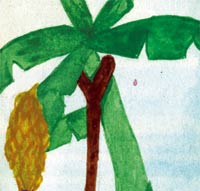
During Phase I (2004–2008), GCP’s efforts towards gene cloning focused on aluminium tolerance in sorghum (Alt genes) and phosphorus-uptake efficiency in rice (Pup genes). Phase II (2009–2014) builds on that initial effort by conducting molecular breeding for those two traits. In addition, orthologous genes, such as the sorghum Al tolerance gene (AltSB) in maize and rice Pup1 in maize and sorghum, were identified. The gene-cloning projects, search for orthologous genes in other crops and application in breeding programmes together required an average expenditure of about 5% of a total GCP research budget of USD 150 million spread over 11 years. Aluminium (Al) toxicity and low phosphorus (P) are major factors that hamper cereal productivity in acid soils, especially in sub-Saharan Africa and South America. Aluminium toxicity is a primary constraint for crop production in arable lands, affecting 38 percent of farmland in Southeast Asia, 31 percent in Latin America and 20 percent in East Asia, sub-Saharan Africa and North America. After nitrogen, phosphorus is the second most important inorganic plant nutrient. It is also one of the least available nutrients because of its tendency to be immobilised in Al and iron complexes in the soil. Nearly half of rice-lands are currently P-deficient. Both Al toxicity and low P cause problems of food security throughout the world and, as abiotic constraints to crop production, are exceeded only by drought. |
|
7. Molecular breeding 
GCP aims to demonstrate – through selected user cases – that molecular breeding (MB) approaches can have significant impact on crop productivity in developing countries. Improved germplasm, developed through MB, is the final product of that overall objective. Of a budget of USD 150 million spread over 11 years, about USD 22 million will have been invested in germplasm improvement (15% of GCP’s budget). GCP Phase I was devoted to building a network of partners to develop genomic, molecular and bioinformatics tools, and to execute capacity-building programmes in developing countries to facilitate crop breeding. The development and continuous improvement of each of these capabilities are essential for enabling increased crop productivity. Only by combining these components can drought tolerance in rainfed agriculture (GCP’s major target) be delivered in such a way that resource-poor farmers will receive tangible economic and social benefits and impacts. |
|
|
8. Services: The Integrated Breeding Platform 
This paper focuses on the outputs and options for GCP’s Integrated Breeding Platform (IBP). Because the development of this component is a major part of the research portfolio of GCP Phase II, the reader will find, embedded as annexes within this overall paper, five shorter papers. These deal with the Platform’s five key elements:
An Annex 6 Genomics tools and resources will be incorporated in due course. |
|
| Back to top | |
|
9. Capacity building and learning materials
The strategic objective of GCP’s CB efforts is to build, in developing-country research institutes, a core of scientists who are trained in and exposed to the use of modern breeding tools. This, in turn, would enhance their involvement in global research initiatives, and enable them to competently take on research leadership roles. Tactical objectives are various: create a platform of training resources on the application of advanced breeding technologies; cultivate research and learning opportunities for country programme scientists; construct systems for ensuring product delivery, including infrastructure support and development of communities of practice; and implement various research support services.
|
|
| Back to top |
|
|
|
|
|
10. GCP's scientific and social network
GCP links basic science with applied research through a broad network of plant scientists from diverse backgrounds, working in regional and country research programmes and at CGIAR Centres, in academia and other research institutes. The first GCP External Programme and Management Review conducted in 2007 captures this ‘people’ essence of GCP in its conclusion: "Perhaps the most important value of GCP thus far, is the opportunities it has provided for people of diverse backgrounds to think collectively about solutions to complex problems and in the process to learn from one another." Indeed, formal presentations by, and informal conversations with, GCP collaborators have both clearly confirmed that these partnerships initiated and nurtured by GCP are greatly valued. In fact, some consider partnerships to be the most enduring legacy of the Programme; they bring together players in crop research that may otherwise never have worked together, and infuse them with what was described at the 2011 General Research Meeting as ‘the GCP spirit’. |
11. GCP's institutional memory
As an upstream science programme, one of GCP’s prime products is knowledge. The GCP network and partnerships bring together a diverse array of applied research teams and scientists from developing and developed countries, CGIAR Centres and universities. Their work has led to the accumulation of a large stock of knowledge that will remain valuable after the Programme closes in 2014. For example, IBP can be used by breeders to help organise their projects and analyse their data; the publications are very important to those that cannot afford journal subscriptions, while the learning modules are useful both to practitioners as well as in the classroom or training courses. All this knowledge, however, only becomes useful if it is accessed, well documented and applied. The goal would then be three-pronged: i) to work out how to make the knowledge that GCP has produced and accumulated accessible; ii) how to keep it suitably relevant and up to date: and, iii) how to increase and broaden awareness of these products. |



